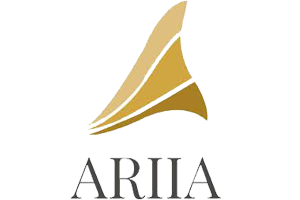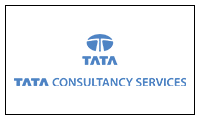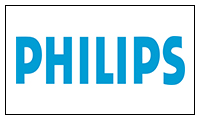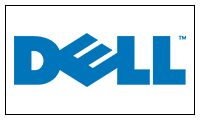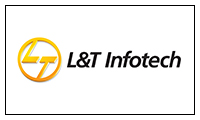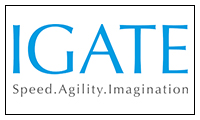- Electrical and Electronics Engineering
- About Us
- Infrastructure / Facilities
Infrastructure/Facilities
The Electrical and Electronics Department has sufficient infrastructure that includes four classrooms, out of which two are ICT enabled and also one classroom has an Impartus Video Capturing Facility. The department has a Research Centre and Seminar Hall equipped with projectors. The department is well equipped with laboratory facilities catering to the needs of Power System Simulation by the available advanced MI-Power software for sufficient users. The availability of software such as MATLAB, Mi-Power, Keil Microvision, and well-maintained compact hardware units fulfill the needs of various computing labs. Adequate sets of DC Machines, Synchronous Machines, and Transformers with a Rectifier Unit, dedicated loads, and supporting equipment suffice the needs of the Basic Electrical and Machines Laboratory. A comprehensive blend of all relays both conventional and advanced and a well-protected High Voltage Cell with all safety norms incorporated, fulfill the requirements of Relays and High Voltage Laboratory.
Department Library
The departmental library is well stocked with around 400 publications consisting of the prescribed textbooks and reference books. The department provides E-resources facilities such as EDUSAT and NPTEL Programme, j-gate link, Springer link, IEEE explore, KNimbus, EBSCO, CRCnetbase link access with OPAC library facility. The departmental library also stocks National and International Conference Proceedings, Project Reports of UG and PG Programmes, Internship Reports of UG and PG, VTU Question Papers, and IGNOU Notes for UG.
Laboratories with UPS support
In this Laboratory, students are taught Electronics Circuits. Analog and Digital circuits which are types of Electronic circuits are also included in the curriculum. The important features that the student's study in this lab are characteristics of Diodes, Transistors, and other Semiconductor Devices and their applications. In addition, they learn to create logic gates that provide the functions of Boolean logic: AND, NAND, OR, NOR, XOR, and combinations thereof. Digital circuitry is used to create general-purpose computing chips, such as microprocessors, and custom-designed logic circuits, known as an application-specific integrated circuit (ASICs). Field-programmable gate arrays (FPGAs), chips with logic circuitry whose configuration can be modified after fabrication, are also widely used in prototyping and development.
This lab consists of machines such as induction motor, induction generator, alternators, synchronous motors, etc., all mounted in an industrial type of assembly to give the students a feel of an industrial ambiance. In this course, students perform some basics experiments on Transformers, DC Machines, Inductions Motors, and Synchronous Machines. The experiments help the students to learn the concepts of Synchronous Machines, Asynchronous Machines Induction Machines, DC Machines and analyse their performance. Starting and speed control of three-phase induction motors, Construction, the principle of operation and performance of single-phase induction motors and special machines.
In this Lab, students perform the experiments on Operational-Amplifiers and Linear Integrated Circuits and study their characteristics and performance. Students are exposed to the various applications of Linear ICs in audio amplifiers, A/D (analog-to-digital) converters, averaging amplifiers, differentiators, DC (direct-current) amplifiers, integrators, multivibrators, oscillators, audio filters, and sweep generators.
In this Lab, students get an overview of the different power electronics components like SCR, TRIAC, DIAC, and their characteristics. They are demonstrated the functioning of different triggering circuits such as UJT, Digital for SCR, and TRIAC and their application in speed control of different motors such as dc motor, universal motor using the full converter, and semi converter. Power electronic circuits are the backbone of almost every modern convenience such as automobiles, cell-phones, laptops, desktop computers, television sets, and all electronic appliances, among many other systems, which require power electronics circuits to convert electrical energy into a useful form.
In this lab, the students will be able to simulate as well as interface various units. The lab is equipped with 8051 Microcontroller Kits as well as MSP 430 Kits and interfacing units such as ADC interface module, 7- segment display with calculator type KBD interface, Dual DAC interface, DC motor interface with DC motor, Computers, Toggle switch interface module, and MSP 430 Micro Controller kit giving a hands-on experience about the programming and utilization of microcontrollers. Microcontrollers are used in a wide variety of applications right from day to day life applications such as automatically controlled products and devices, industrial control drives like automobile engine control systems, implantable medical devices, remote controls, office machines, appliances, power tools, toys, and other embedded systems as well as modern metering and measurement devices.
Control System Laboratory course is intended to provide knowledge on the analysis of control system performances of the desired specifications. The objective of this laboratory is to determine the mathematical model of various electrical types of equipment which consists of both hardware and software methods for analysing the time and frequency response and stability of a given system. The Hardware experiments consist of the design of Lead, Lag, and Lag-Lead compensators for given specifications, determination of the performance characteristics of ac and dc servomotors and synchro-transmitter receiver pair used in control systems. The software programs are implemented using MATLAB and Simulink. The student will also learn to write script files to plot Root Locus, Bode Plot, Nyquist Plots to study the stability of the system.
The goal of this lab is to prepare students for the “real world”, where students may program DSP for signal processing, energy, biomedical, robotics, or communications companies amongst others. One main intention is to introduce students to what a DSP engineer would be doing from the software, hardware, and application-based perspectives. This means the labs will cover theory, design, implementation, as well as user interfacing. With MATLAB and Simulink signal processing products, they can: Acquire, measure, and analyse signals from many sources, design streaming algorithms for audio, smart sensor, instrumentation, and IoT devices.
In this lab, the students will be provided an opportunity to build mathematical models of the system components and analysing them with available simulation software like MATLAB or MI Power. These computer programs are used in planning and operation of power systems Including Load Flow (Power Flow Study), Short Circuit, Optimal Dispatch of Generating Units (Unit Commitment), Transmission Line Parameters Calculation, Formation of Bus Admittance Matrix and Bus Impedance Matrix
In this lab, Students get the practical exposure to the breakdown strength of transformer oil, spark over characteristics of free space for uniform and non-uniform configurations for both AC and DC voltage. The students also learn the characteristics of over current, over voltage, under voltage and negative sequences relay for both electromagnetic and static type relays, microprocessor based over current, over voltage, under voltage relays and distance relay. The students also get to know how the protection will be done for generator, motor and feeders in industries and substations. The students also study about standard lightning impulse voltage and study its characteristics.
In this lab, the experiments are designed to expose students to the practical executions of the fundamental theories of Electrical Engineering like KCL, KVL, Control of Lamp, Measurement of Power for different lamps, Power measurement in three-phase with two wattmeter methods, Earthing, demonstration experiments on Fuse and MCB characteristics, UPS. It helps the students to know the basic ideas regarding the precautions to be taken during Electric Shock.
Major Equipment and Software Tools
DC regulated power supply model, Signal Generator and Cathode ray oscilloscope 2MHz ( Analog Type), Digital IC Trainer Kit, and Digital IC Tester
8051 MC Flash pro evaluation kit, LCD and interfacing KIT
Static Characteristics of SCR, MOSFET, and IGBT Module. Triggering unit, Speed control module for stepper motor, Universal motor ,Induction motor and Separately excited DC motor.
The capacitor start and run Induction motor, 3 Phase Squirrel Cage Induction motor,3 Phase Slip Ring Induction motor, Single Phase transformer 1KVA/230V 1:1 transformer, 2KVA/230V 1:1 transformer with tapings at 0 to 50%, 86%, 100%. 1KVA/230V 1:1 transformer, Rheostat Load, 1 Phase, and 3 Phase Autotransformer, Digital tachometer.
DC rectifier unit 220V, 100A with line and load regulation and protection circuit, DC Shunt Motor, DC shunt generator, DC Compound Motor, DC compound generator, DC series motor, salient pole alternator, auto start synchronous motor and non- salient pole alternator, 3ɸ and 1ɸ Induction Motor with DOL Starter and Mechanical Loading, 3ɸ Slip Ring Induction Motor Mechanical Loading
Lead Network Kit, Lag – Lead Network Kit, PID Controller Kit, DC Servo Motor Kit, AC Servo Motor, Frequency Response and Time Response Characteristics of Second-Order Systems and Synchro transmitter-receiver pair Unit, Cathode Ray Oscilloscope, Regulated Power Supply (DC)
HV Source,50kV AC/70kV DC set, Rod Gap Apparatus, 62.5mm Sphere gap with water resistor, Over Voltage Electro-Mechanical Relay Kit, Negative Sequence Relay Kit, Generator Protection & Motor Protection Scheme fault Study Unit, 60KV Oil Testing Kit, Over Current Relay –Directional Features and IDMT Directional, Numerical Relay Over/Under Voltage kit, Numerical Over Current relay kit and IDMT non-directional characteristics Relay Test Kit, Field Mapping Electrolytic Tank, Negative Sequence Relay, Feeder Protection Fault Study unit.
SERVER with Internet facility, Printers, Scanners and LCD Projectors
-
MI Power Software (9.0), (Freeware Version-, PSpice, AutoCAD, Matlab,Keilmicrovision).
FACILITIES PROVIDED FOR THE STUDENTS & FACULTIES
Electrical Engineering Students’ Association
Well-furnished seminar hall
Well stocked departmental library
Smart classrooms equipped with a lecture video recording system
Wi-Fi connectivity
Hard copies of online journals
Sponsorship for innovative and mini-projects
Sponsorship to all research activities including foreign travel for attending workshops or conferences
Study / Sabbatical leave for higher studies / industrial training
Bank and ATM facility on the campus
Bus facilities
Research laboratory

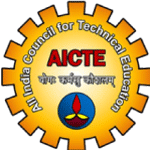
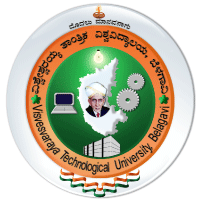

.png)

